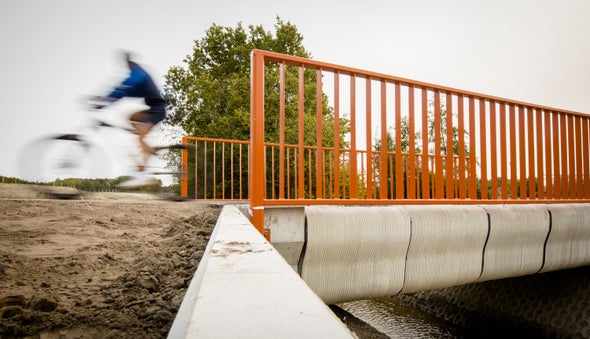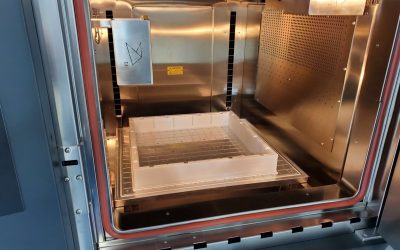A cycle bridge in Gemert, the Netherlands, which Dutch officials claim is the first in the world to be 3D printed.
.
In the Netherlands, renowned for its canals, bridges are a common sight. But four bridges in particular are construction oddities: each 26-foot structure was fashioned from concrete by a giant robotic printer. They are part of a revolution that is seeing 3D printers, which extrude plastic and other materials to build up solid objects, move from the tabletop to the construction lot.
.
Since 2017, several companies and groups in the U.S., Europe and Asia have ‘printed’ bus-stop shelters and convention-hall partitions, as well as entire homes. The techniques of 3D printing are still in the early stages, but commercial-grade printers could radically change the construction business in the next decade. Experts believe they could cut construction time in half, reduce costs by as much as a third, and offer greener, sturdier designs, with more scope for customization. As the technology takes off, the global 3D printing construction market is forecast to reach USD14.9 billion by 2026 from just USD4.6 million in 2019, according to Polaris Market Research. A Jack of All Trades 3D construction printers work a […]
Click here to view original web page at www.scientificamerican.com






























0 Comments